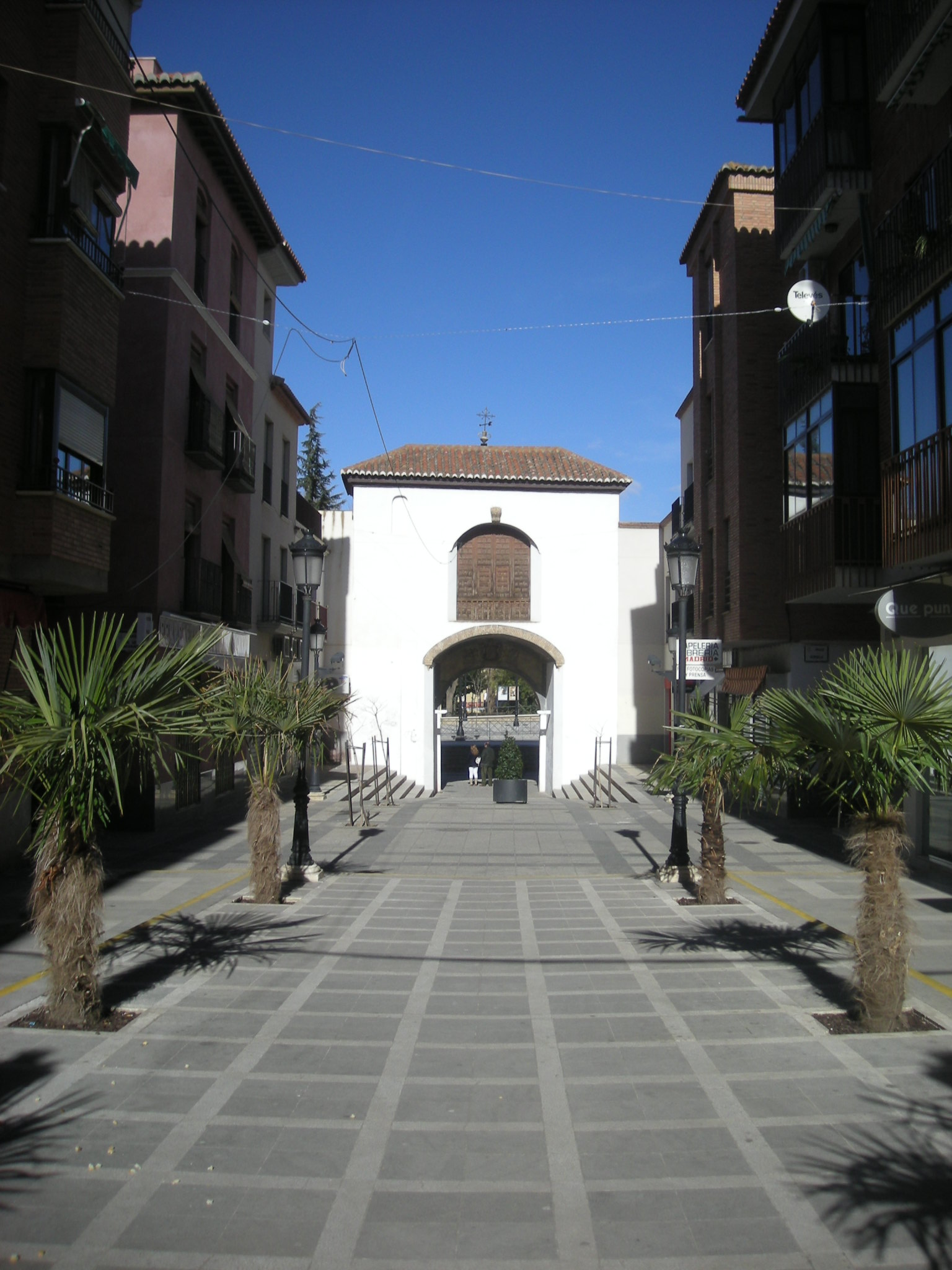Torquatus Of Acci on:
[Wikipedia]
[Google]
[Amazon]
Saint Torquatus ( es, Santo Torcuato) is venerated as the patron saint of Guadix, Spain. Tradition makes him a
 Torquatus' relics were rediscovered in the 8th century during the
Torquatus' relics were rediscovered in the 8th century during the
Torquatus
San Torquato Vescovo di Guadix
{{DEFAULTSORT:Torquatus Of Acci People from the Province of Granada Saints from Hispania 1st-century Christian martyrs Year of birth unknown
Christian
Christians () are people who follow or adhere to Christianity, a monotheistic Abrahamic religion based on the life and teachings of Jesus Christ. The words ''Christ'' and ''Christian'' derive from the Koine Greek title ''Christós'' (Χρι ...
missionary of the 1st century, during the Apostolic Age. He evangelized the town of ''Acci'', identified as Guadix, and became its first bishop.
He is one of the group of Seven Apostolic Men (''siete varones apostólicos''), seven Christian clerics ordained in Rome by Saints Peter and Paul and sent to evangelize Hispania. Besides Torquatus, this group includes Sts. Hesychius, Caecilius, Ctesiphon
Ctesiphon ( ; Middle Persian: 𐭲𐭩𐭮𐭯𐭥𐭭 ''tyspwn'' or ''tysfwn''; fa, تیسفون; grc-gre, Κτησιφῶν, ; syr, ܩܛܝܣܦܘܢThomas A. Carlson et al., “Ctesiphon — ܩܛܝܣܦܘܢ ” in The Syriac Gazetteer last modi ...
, Euphrasius, Indaletius
Saint Indaletius ( es, San Indalecio) is venerated as the patron saint of Almería, Spain. Tradition makes him a Christian missionary of the 1st century, during the Apostolic Age. He evangelized the town of Urci (today Pechina), near the present ...
, and Secundius (''Isicio/Hesiquio, Cecilio, Tesifonte, Eufrasio, Indalecio y Segundo'').
It is not certain whether Torquatus was a martyr or confessor of the faith.
Veneration
 Torquatus' relics were rediscovered in the 8th century during the
Torquatus' relics were rediscovered in the 8th century during the Moorish invasion of Spain
The Umayyad conquest of Hispania, also known as the Umayyad conquest of the Visigothic Kingdom, was the initial expansion of the Umayyad Caliphate over Hispania (in the Iberian Peninsula) from 711 to 718. The conquest resulted in the decline of t ...
, in a church built in his honor, near the Limia River.
Torquatus' relics and those of Euphrasius were translated
Translation is the communication of the meaning of a source-language text by means of an equivalent target-language text. The English language draws a terminological distinction (which does not exist in every language) between ''transla ...
to Galicia
Galicia may refer to:
Geographic regions
* Galicia (Spain), a region and autonomous community of northwestern Spain
** Gallaecia, a Roman province
** The post-Roman Kingdom of the Suebi, also called the Kingdom of Gallaecia
** The medieval King ...
. Torquatus’ relics remained for a long time in the Visigothic church of Santa Comba de Bande
Santa Claus, also known as Father Christmas, Saint Nicholas, Saint Nick, Kris Kringle, or simply Santa, is a legendary figure originating in Western Christian culture who is said to bring children gifts during the late evening and overnight ...
(Ourense
Ourense (; es, Orense ) is a city and capital of the province of Ourense, located in the Autonomous communities of Spain, autonomous community of Galicia (Spain), Galicia, northwestern Spain. It is on the Camino Sanabrés path of the Way of St ...
) (''Santa Comba de Baños'').
In the 10th century, Torquatus' relics were translated to San Salvador de Celanova
The monastery of San Salvador de Celanova is a religious complex in Celanova, Galicia, Spain. The once wealthy abbey of Benedictines was founded by St. Rudesind (San Rosendo) in 936. The jewel of the complex is the small mozarabic chapel of San ...
(in Celanova, Ourense).
In 1592, the sepulcher at Celanova was opened and part of Torquatus’ relics was distributed to Guadix, Compostela, and Ourense
Ourense (; es, Orense ) is a city and capital of the province of Ourense, located in the Autonomous communities of Spain, autonomous community of Galicia (Spain), Galicia, northwestern Spain. It is on the Camino Sanabrés path of the Way of St ...
, and also to El Escorial, and to the Jesuit
, image = Ihs-logo.svg
, image_size = 175px
, caption = ChristogramOfficial seal of the Jesuits
, abbreviation = SJ
, nickname = Jesuits
, formation =
, founders ...
college at Guadix, and in 1627, to Granada
Granada (,, DIN 31635, DIN: ; grc, Ἐλιβύργη, Elibýrgē; la, Illiberis or . ) is the capital city of the province of Granada, in the autonomous communities of Spain, autonomous community of Andalusia, Spain. Granada is located at the fo ...
. The relics that remained in San Salvador de Celanova were placed in the main chapel of the church of the monastery, together with those of Saint Rudesind, the monastery's founder.
The cathedral of Guadix conserves three relics associated with Saint Torquatus: his arm, his jawbone, and his calcaneus
In humans and many other primates, the calcaneus (; from the Latin ''calcaneus'' or ''calcaneum'', meaning heel) or heel bone is a bone of the tarsus of the foot which constitutes the heel. In some other animals, it is the point of the hock.
S ...
(this last relic is not on display).
It has been theorizedCastro Pérez, Ladislao (1992). ''Los torques de los dioses y de los hombres''. A Coruña: Ayuntamiento de La Coruña. that Torquatus, may be a Christian version of the Celtic god Bandua Bandua was a theonym used to refer to a god or goddess worshipped in Iberia by Gallaeci and Lusitanians. Whether the name referred to a discrete deity or was an epithet applied to different deities is arguable.
Epigraphy
The deity's name is found ...
.
References
External links
Torquatus
San Torquato Vescovo di Guadix
{{DEFAULTSORT:Torquatus Of Acci People from the Province of Granada Saints from Hispania 1st-century Christian martyrs Year of birth unknown